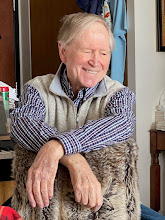I took Latin in high school a half-century ago, using a book that was published when Latin was not yet a dead language, I think. The book wasn't stodgy, though. It was kind of hip for a high school textbook published -- in the forties. Anyhow. I recall near the front of the book, before we had to buckle down to Julius Caesar's "Omnia Gallia in tres partes divisa est," and we were translating the Latin equivalent of Dick and Jane, there's a color cartoon of a Roman cop (looks a lot like one of those soldiers in Quo Vadis? red-plumed helmet?) making a bust of a comely, long-tressed girl in toga who's been driving her chariot too fast. "Ubi ignis est?" he says: "Where's the fire?" (The movies of the forties had stupid, grumpy cops who always hollered to speeders, "Where's the fire?" That was as big a cliche as a dog peeing on a red fire hydrant.) Mark Twain went to a Wagner opera while visiting Europe and he said it "sounded like a fire at an orphanage." Three Johnstowners who are to play the Magi show up for the Baptist Nativity pageant wearing back-billed hardhats and slicker raincoats. "What the--?" says the Sunday school teacher. "You said the three wise men came from afar, right?" they say.
Humor having to do with fires, right? Got some doozies. Today I began research for the Johnstown-Clifty County Library. I was compiling a list of Johnstown fires in the nineteenth century. Here are a couple of nuggets:
(1) 1845, March 19. Presbyterian Church ... [The church] had recently renovated the sanctuary and had also carpeted it. When the fireman arrived, the town marshal and several members of the church stood in the doorway and forbade anyone from throwing water on their new carpet. Soon the building was completely destroyed.
(2) 1890, September 28. The shift had just started at Richwood Distillery when workmen smelled smoke. They discovered fire in the cooperage shop where barrels were made to age whiskey.
Mr. Snyder, manager of the distillery near Milton, Kentucky, had seen the entire facility wiped out in an 1882 fire. And he quickly saw that there were not enough men or equipment to fight this blaze. So he phoned city hall at Johnstown, Indiana, asking that fire equipment and help be sent.
Joseph Brashear was Johnstown mayor and founder of Volunteer Co. No. 3. He ordered two of the horse-drawn steam pumpers to the ferry boat landing, bound for the distillery on the other side of the river. Within an hour the steamers arrived, crossing the river and going two miles upstream. Volunteers soon had four lines of 2-1/2 inch hose stretched to the burning building.
The two pumpers were from Fair Play Fire Co. No. 1 and Washington Fire Co. No. 2. The engines stayed on the boat and pumped water from the river at the rate of 400 gallons per minute.
The delay of getting the pumpers there allowed the fire to spread from the kiln to a warehouse holding 2,000 barrels of whiskey with government stamps already paid. They were for a Cincinnati broker who had sold them to some Western outlets.
Volunteers hosed the blaze for about seven hours until they thought it was extinguished, then took up the hose and the boat returned to Johnstown.
They had returned the engines to their stations and had gone home to clean up and have supper, when a call came from Snyder saying the embers had started blazing again. This time the No. 2 pumper went to the fire. It was daybreak before they got home.
But it seems that there were nearly as many battling "firewater" as fighting the fire. Several volunteers joined distillery workmen in trying to save the 2,000 barrels of whiskey. The three best known brands then were Crab Orchard, Teakettle Bourbon, and Susquehanna Rye.
Bungs on some of the barrels were lost and pulled out. Other barrels broke open in the confusion. A regular river of "likker" oozed down the bank to River Road. Some of it flowed near the buildings and caught fire.
Fast-thinking volunteers threw sand on the burning booze while others got feed sacks from the nearby barn, wet them, and smothered the blaze. Then some more volunteers thought of the horrid waste of the valuable liquid and began scooping it up with their hands -- putting it in any container they could find. Boots and shoes became "bottles." Derby hats were tried. But the fragrant contents leaked out.
A nearby watermelon field provided the answer. A large plug taken from the side made an opening through which the seeds and inner fruit could be removed. The melon filled with the whiskey could be stoppered with the plug.
Newspapers at the time were full of things that happened at the whiskey fire. One told of a bevy of good church women standing close to the the fire. They said they got dizzy from the whiskey fumes -- and none of them had ever touched the stuff.
But the finale was a drinking party held by several small boat owners who had visited the fire and scooped up several gallons of the escaping liquor. They had a party near the Johnstown Brewery at the corner of Park Avenue and Ferry Street. And after they got gloriously drunk, they had a free-for-all brawl. The sheriff put all of them in the brig to stop the bloodshed.
A final report of damages showed that of the 2,000 barrels of whiskey, only 96 were removed safely.
That's my hometown.
Subscribe to:
Post Comments (Atom)

1 comment:
I believe the original author of the whiskey fire story took considerable literary license, and that license ought to be revoked.
Post a Comment